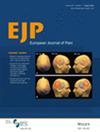Development and Validation of a Short Version (PAIC6) of the Pain Assessment in Impaired Cognition Scale
Abstract
Background
Observer pain scales are commonly used to assess pain in individuals with impaired cognition. However, nursing staff have highlighted that extremely tight time schedules and increasing workload demands prevent regular use. With the development of a short version of the Pain Assessment in Impaired Cognition (PAIC15), we aimed to reduce implementation barriers in everyday clinical practice.
Methods
We developed a new 6-item short version (PAIC6) in a first sample (N = 59) and validated its psychometric properties in a second sample (N = 250) of older individuals with cognitive impairments. The item reduction and evaluation involved four steps. First, we used Sample 1 to exclude items based on item quality statistics (e.g., difficulty, reliability). Second, the Partial Credit Model (PCM) was utilised for further reduction using again Sample 1. Third, an expert panel evaluated the preceding steps and suggested a draft short version with six items (PAIC6). Fourth, psychometric properties of the short version were evaluated in the independent Sample 2. Thereafter, the final short version was approved.
Results
The new PAIC6 showed a high correlation with the total scale PAIC15 (r = 0.870), good reliability (Cronbach's α = 0.684), and high convergent construct validity, as observed by a high correlation with the established Pain Assessment in Advanced Dementia (r = 0.602).
Conclusions
Overall, we developed a valid, reliable, and clinically valuable PAIC6 that allows a more time-efficient pain assessment, by reducing the assessment time from 5 min to approximately 2 min (60% time saving).
Significance
Observer pain scales are commonly used to assess pain in individuals with impaired cognition. However, nursing staff have highlighted that extremely tight time schedules and increasing workload demands prevent regular use. To address this, we developed PAIC6, a short version of the Pain Assessment in Impaired Cognition 15 (PAIC15). PAIC6 includes six items and takes 2 min for completion after training, realising a 60%-time reduction compared to the original scale while keeping the psychometric quality high.


 求助内容:
求助内容: 应助结果提醒方式:
应助结果提醒方式:


